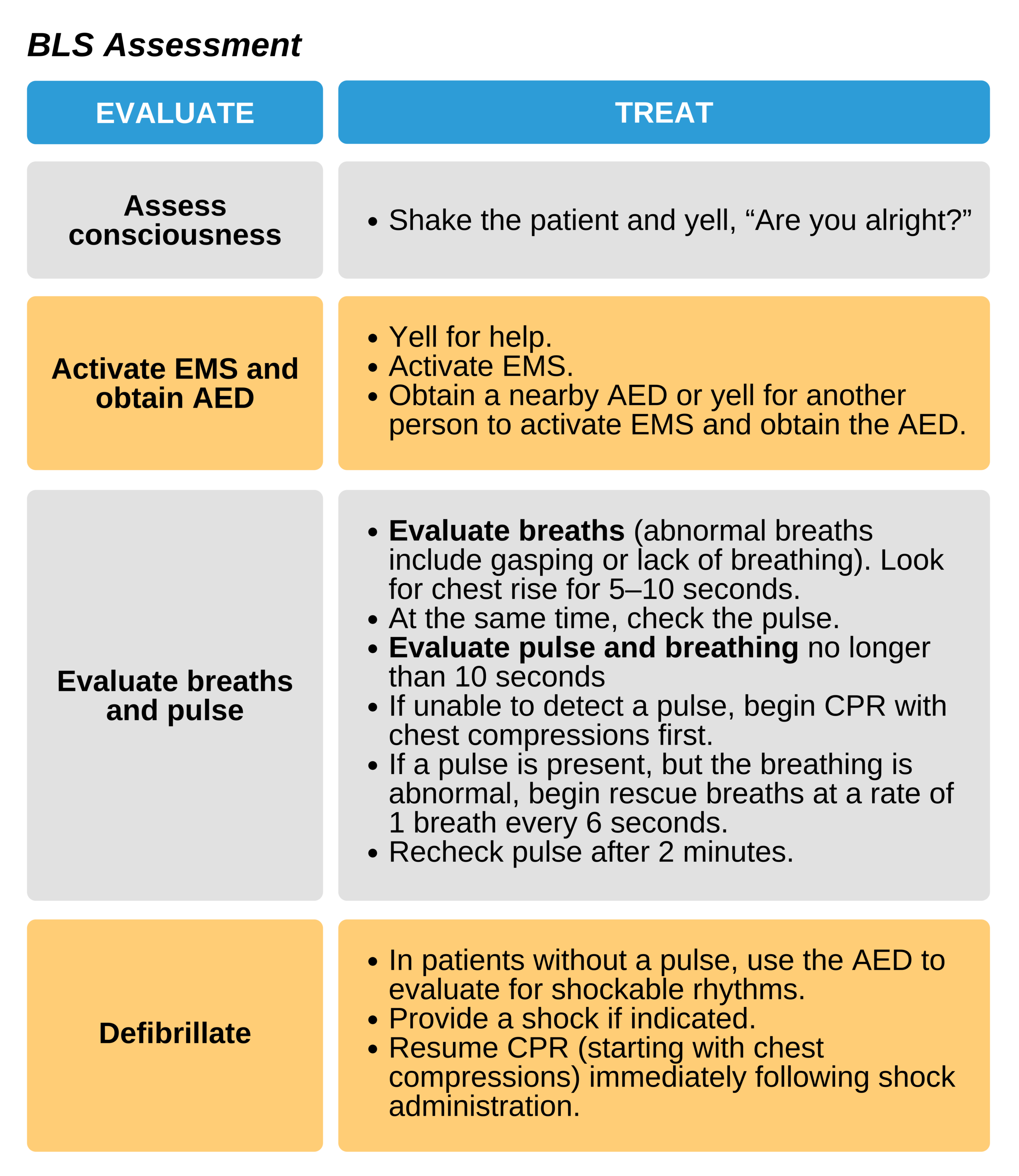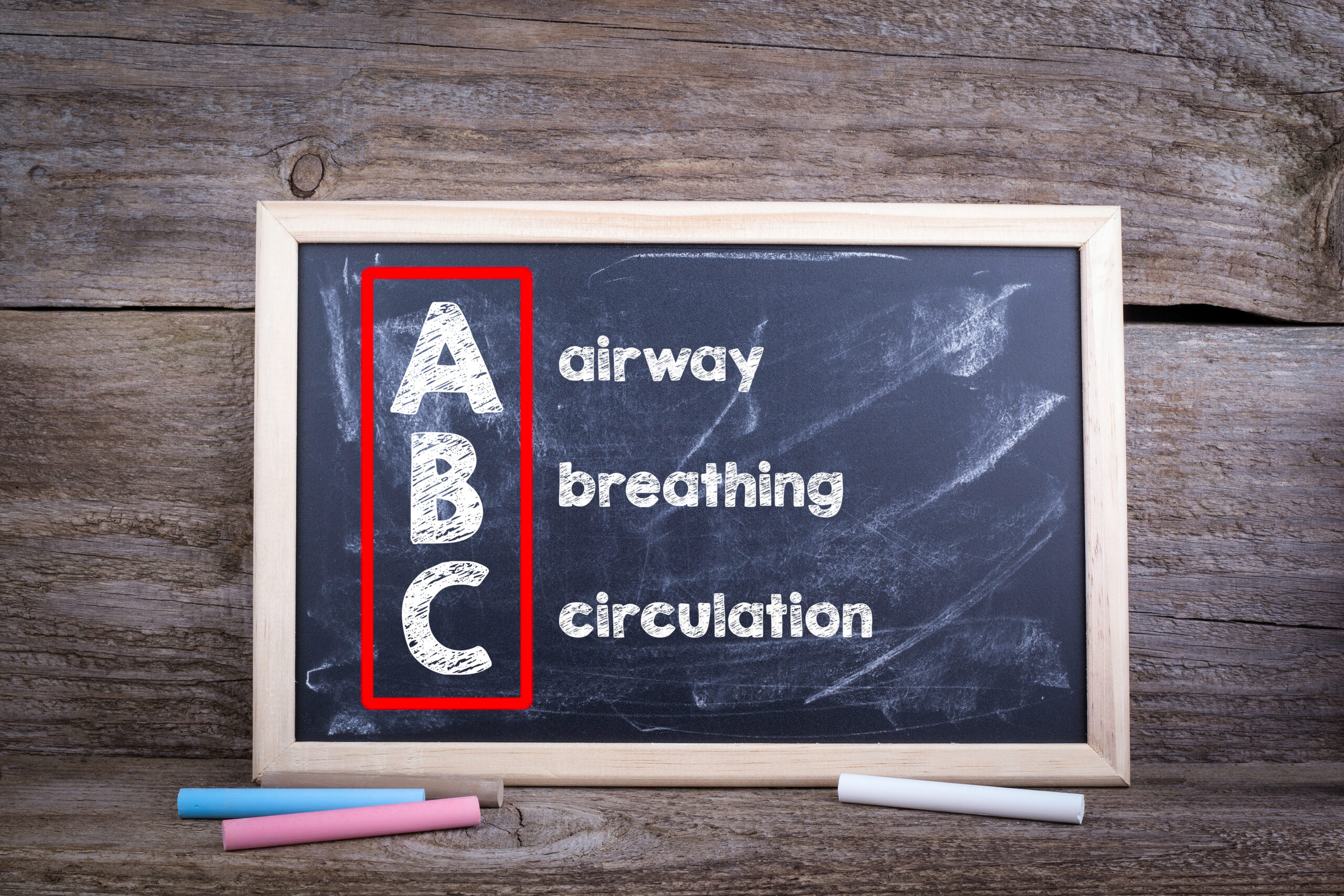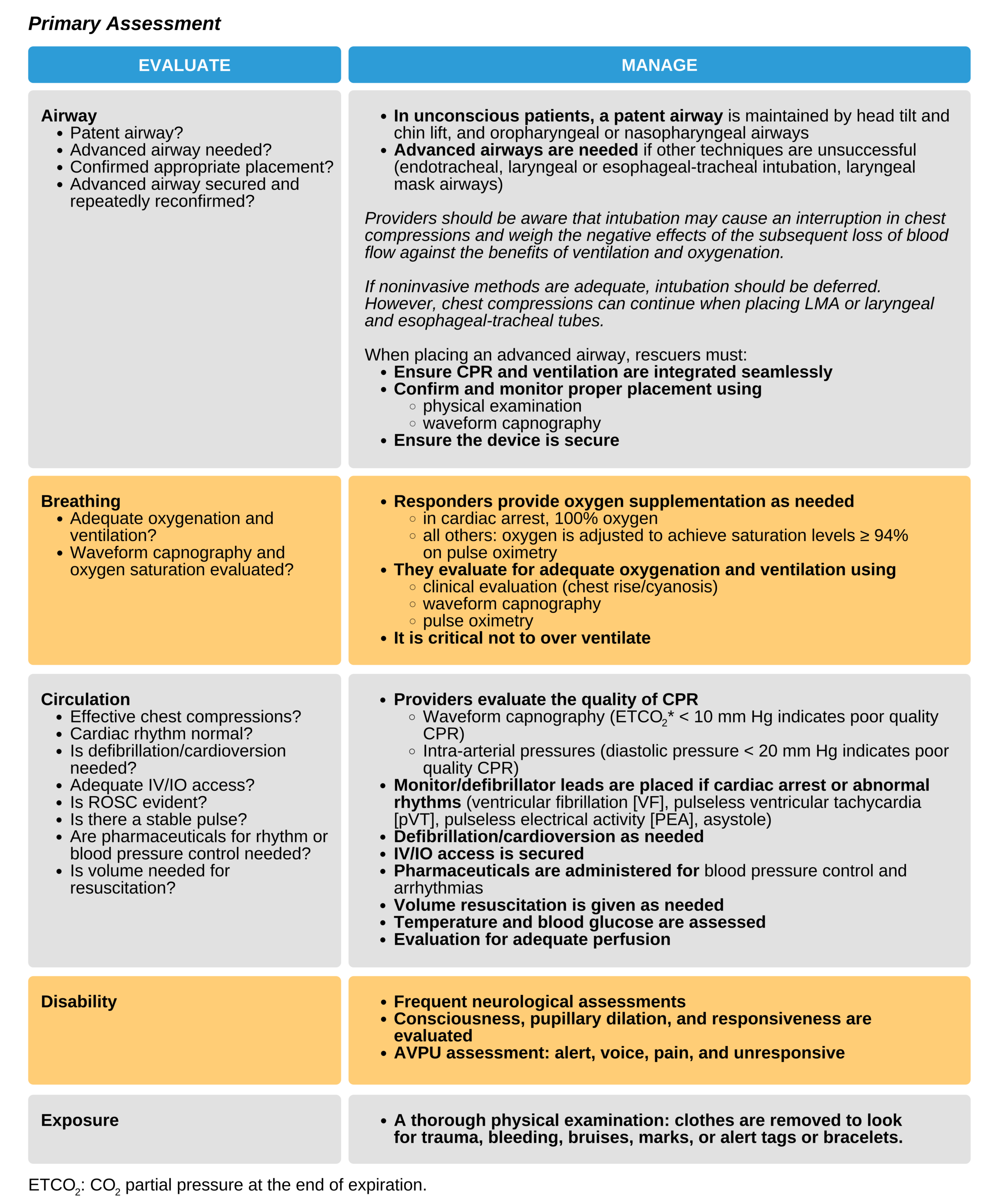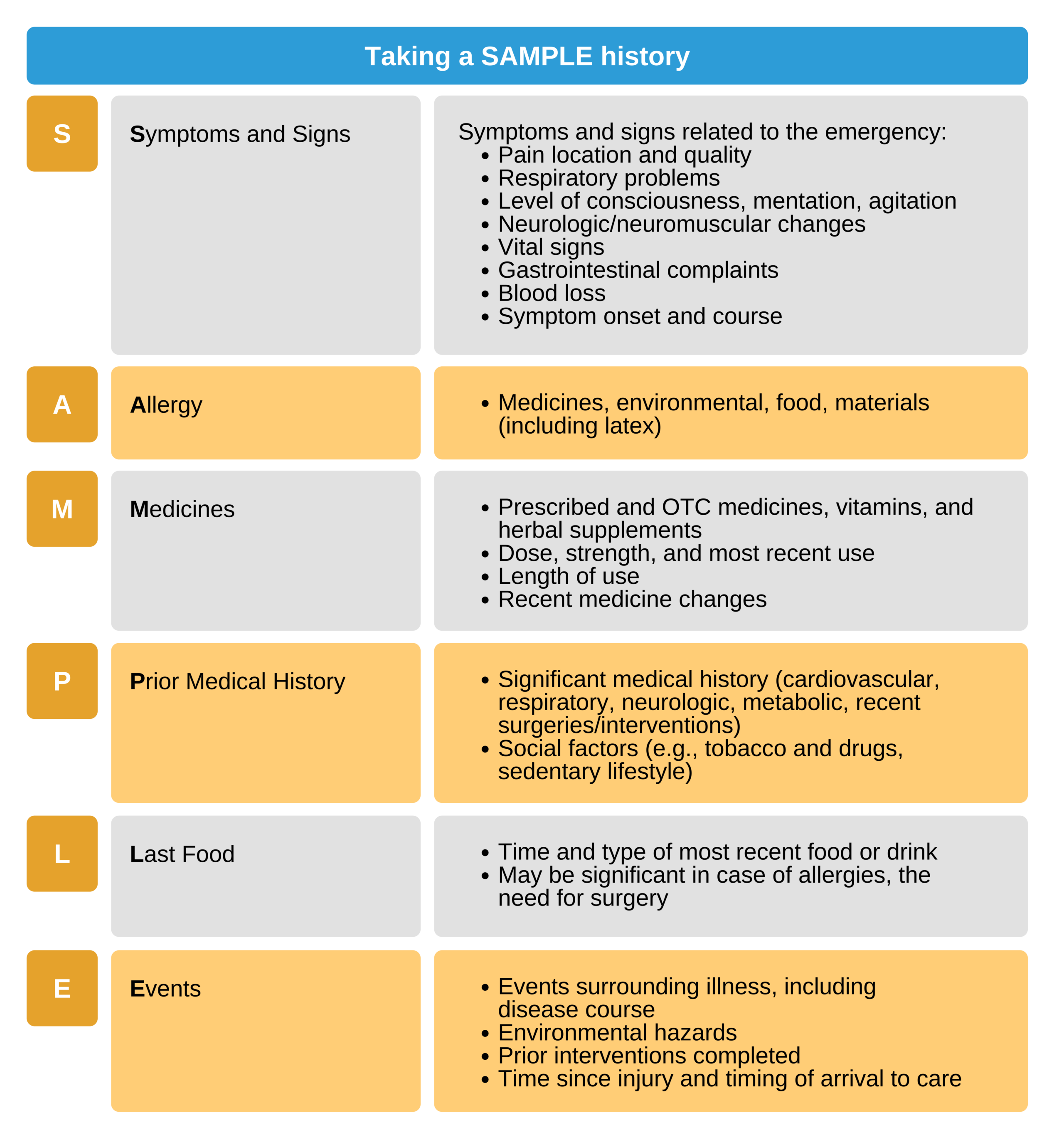Assessment
Assessment: BLS
The BLS assessment provides a systematic tool for any healthcare responders to manage an emergency. It focuses on quick and effective CPR and defibrillation to save lives. Simple techniques are recommended, with no use of advanced airways or pharmaceuticals.
BLS allows for support of the cardiac and pulmonary systems and may enable ROSC until more advanced responders and techniques (ACLS) are available. Early BLS improves the patient’s chance of survival and neurologic health.
Key Takeaway
The goal must be high-quality CPR (especially chest compressions) and defibrillation until reinforcements arrive.
- Compressions that are quick and strong
- Full recoil between compressions
- Decreased interruptions to compressions (under 10 seconds)
- Avoiding over-ventilation
- Switching responder roles after 2 minutes (to minimize fatigue)
BLS responders do not require any equipment but can benefit from using bag-mask devices or pocket masks and adhering to universal precautions. Patients should be treated supine, in a safe environment, and on a stable, flat surface.
Related Video: Understanding a BLS Assessment
BLS Assessment

BLS should continue without interruption even when advanced practitioners arrive on the scene. EMS or ACLS teams must seamlessly integrate into the resuscitation efforts without introducing unnecessary interruptions.
Assessment: Primary
During the primary assessment, responders evaluate the airway, give pharmaceuticals, obtain vascular access, and provide continuous monitoring as well as collecting vitals and blood for laboratory tests.
Key Takeaway
Reducing unnecessary interruptions is vital to effective BLS.
Avoid:
- Excessively long rhythm analysis
- Inappropriately frequent pulse checks
- Excessively long rescue breaths
- Excessively long role changes
This assessment includes five steps, known as A-B-C-D-E. It is also vital to begin to consider the underlying cause of arrest and directed management.
- Airway: Rescuers evaluate if the airway is patent. If not, they consider adjuncts for the airway or intubation.
- Breathing: Responders evaluate if breaths are adequate for ventilation and oxygenation. If bag-mask ventilation is inadequate, they perform intubation. Adequate placement is confirmed via examination or waveform capnography, and adequate ventilation is provided.
- Circulation: Heart rate, vital signs, and heart rhythm are evaluated. Vital signs provide information about adequate circulation. IV access is obtained to provide fluids and pharmaceuticals such as vasopressors to maintain circulation. Perfusion of the body’s organs is assessed, especially of the brain and heart, and responders begin to consider the Hs and Ts, which can affect perfusion.
Related Video: Introduction to the Hs and Ts
Four abnormalities in cardiovascular physiology must be considered:
- Intravascular volume: blood loss, dehydration, gastrointestinal fluid loss
- Systemic resistance: vasoconstriction or vasodilation, cardiac output, shifts of blood flow
- Heart contractility: cardiac dysfunction
- Heart rate: tachycardias and bradycardias.
Related Video: What is Cardiac Output Formula?
Disability: Providers monitor for neurologic changes. They assess consciousness, pupil dilation, and responsiveness. The AVPU system is useful and has four areas: alert, voice, painful, and unresponsive.
Related Video: What is the Neurological Assessment?
Exposure: evaluate the entire patient by removing clothes to examine for trauma, bruises, burns, bleeding, or medical alert tags/bracelets.

Airway, breathing, and circulation are known as the ABCs.
Primary Assessment

Related Video: Understanding the Steps of the Primary Assessment
Assessment: Secondary
It is useful for responders to use the mnemonic, SAMPLE, to guide the differential diagnosis:
- Symptoms and signs
- Allergy
- Medicines
- Prior medical history
- Last food
- Events
Taking a SAMPLE history
